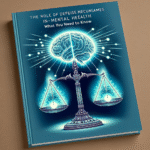
Meditation for the Busy Mind: Quick Techniques for Beginners to Empower Your Day
In our fast-paced world, where every second counts and distractions are everywhere, the concept of meditation can feel out of reach. But here’s the good news: you don’t need hours to experience the profound benefits of meditation. Welcome to the world of Meditation for the Busy Mind: Quick Techniques for Beginners, where you can transform your mindset and find peace amidst life’s chaos—even with just a few minutes to spare.
Introduction: The Need for Instant Calm
Whether you’re juggling work deadlines, family commitments, or the barrage of social media notifications, your mind is likely racing at full speed. The noise can overwhelm any attempt at mindfulness. However, the practice of meditation offers practical solutions even for those leading hectic lives. This article will guide you through quick, effective techniques tailored to busy beginners, proving that a calm mind is both achievable and sustainable.
The Science Behind Meditation: Why It Matters
Before diving into techniques, it’s essential to understand the science backing meditation. Research shows that even short meditation sessions can reduce stress, enhance focus, and promote emotional well-being. A study published in the Journal of Health Psychology found that just ten minutes of meditation can significantly lower anxiety and improve your overall mood.
Case Study: The Corporate Executive
Consider John, a corporate executive who faced chronic stress due to a demanding workload. With only ten minutes to spare each day, he adopted the technique of mindful breathing. Over a month, he reported increased productivity, reduced stress levels, and a renewed sense of clarity. His story illustrates how Meditation for the Busy Mind: Quick Techniques for Beginners can truly shift daily experiences.
Quick Techniques Everyone Can Master
Here are some straightforward and effective techniques that anyone can integrate into their busy schedule, helping you to harness the power of meditation.
1. Mindful Breathing
Time Required: 5 minutes
Steps:
- Find a comfortable seated position.
- Close your eyes and take a deep breath in through your nose, allowing your abdomen to expand.
- Hold for a few seconds, then exhale slowly through your mouth.
- Repeat this for five minutes, focusing solely on your breath.
Benefits: This technique anchors your attention and relaxes your nervous system, making it ideal during a stressful day at work.
2. Body Scan Meditation
Time Required: 10 minutes
Steps:
- Lay down comfortably and close your eyes.
- Start by bringing your awareness to your toes, gradually moving up your body.
- Notice any tension and consciously relax each body part.
- Continue to the top of your head.
Benefits: This practice increases bodily awareness and helps release pent-up stress, allowing you to reconnect with your physical self.
3. One-Minute Mindfulness
Time Required: 1 minute
Steps:
- Whenever you feel overwhelmed, pause and take one deep breath.
- Focus on the inhale and exhale, letting thoughts come and go.
- Acknowledge any distractions without judgment.
Benefits: This technique is perfect for quick resets during a busy day, helping you recenter amidst chaos.
4. Guided Visualization
Time Required: 7 minutes
Steps:
- Find a comfortable position and wear headphones.
- Listen to a short guided meditation that leads you through a calming landscape.
- Allow your imagination to explore this space, engaging your senses.
Benefits: This technique can transport your mind away from stress, even during a coffee break.
5. Gratitude Meditation
Time Required: 5 minutes
Steps:
- Sit comfortably and close your eyes.
- Think of three things you are grateful for and visualize each one.
- Spend time reflecting on how these blessings make you feel.
Benefits: Gratitude meditation fosters a positive mindset, even in challenges.
Table: Benefits of Quick Meditation Techniques
| Technique | Time Required | Benefits |
|---|---|---|
| Mindful Breathing | 5 minutes | Reduces stress, increases focus |
| Body Scan Meditation | 10 minutes | Enhances bodily awareness, releases tension |
| One-Minute Mindfulness | 1 minute | Quick reset, recentering |
| Guided Visualization | 7 minutes | Enhances creativity, relaxation |
| Gratitude Meditation | 5 minutes | Fosters positivity, emotional well-being |
Staying Consistent: Making Meditation a Habit
Starting a new practice is often the most challenging part. To incorporate these Meditation for the Busy Mind: Quick Techniques for Beginners into your daily routine, consider these tips:
- Set a Reminder: Use your smartphone to remind you to meditate at the same time every day.
- Create a Ritual: Pair your meditation with an existing habit, such as your morning coffee or evening wind-down.
- Find a Community: Join a meditation group or online community for motivation and support.
- Be Kind to Yourself: Don’t worry about achieving perfection. The aim is progress, not perfection.
Conclusion: Your Journey to a Weaker Busy Mind
The journey of incorporating meditation into your life doesn’t require drastic changes. By choosing one or two techniques from our list of Meditation for the Busy Mind: Quick Techniques for Beginners, you can cultivate a practice that fits seamlessly into your lifestyle.
As you navigate the ebbs and flows of daily life, remember that meditation is about creating a moment of stillness amidst the noise. With each mindful breath, you’re not just changing your day; you’re shaping your mindset and ultimately your life. Start small, stay committed, and watch as peace becomes your new normal.
FAQs: Answering Your Meditation Queries
1. How long should I meditate for as a beginner?
For beginners, starting with just 5 to 10 minutes a day is sufficient. Gradually increase the duration as you become more comfortable.
2. Can I meditate anywhere?
Absolutely! You can meditate in a quiet space at home, a park, or even your office—just find a comfortable spot to sit quietly.
3. What if I can’t clear my mind?
It’s normal not to have a completely clear mind. Acknowledge distractions as they come, then gently guide your focus back to your breath or the technique you’re practicing.
4. Do I need special equipment for meditation?
No special equipment is necessary; comfortable clothing and a quiet space are all you need. You can also use meditation apps or recordings if you find them helpful.
5. How do I know if meditation is working for me?
Pay attention to how you feel over time. Notice if your stress levels decrease, your focus improves, or you feel more present in daily activities.
In today’s fast-paced society, Meditation for the Busy Mind: Quick Techniques for Beginners is essential to find moments of peace and clarity. Take these insights, implement them into your life, and watch as your busy mind transforms into a calm, focused ally.


















